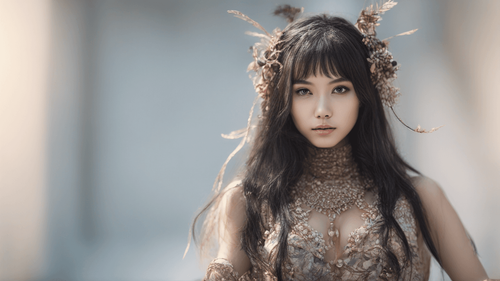
Introduction
In the ever-evolving landscape of artificial intelligence, one of the most intriguing developments is the emergence of AI models capable of generating images. This innovative technology has opened new avenues for creativity, design, and problem-solving. In this comprehensive article, we will explore the fascinating world of AI model generating images, delving into its intricacies, applications, and potential impact on various industries.
AI Model Generating Images: Unleashing Creative Possibilities
As technology continues to advance, AI model generating images is taking center stage. This remarkable innovation enables computers to produce visual content, blurring the lines between human imagination and artificial intelligence.
Understanding AI Model Generating Images
AI model generating images involves training sophisticated neural networks to create visuals that closely resemble human-created art. These models analyze vast amounts of data, learning patterns and styles to generate images that are both astonishing and imaginative.
The Role of Generative Adversarial Networks (GANs)
Generative Adversarial Networks (GANs) play a pivotal role in the field of AI-generated images. GANs consist of two neural networks—the generator and the discriminator—working in tandem to produce authentic-looking images. This dynamic interplay leads to continuous improvement and the production of increasingly realistic visuals.
Advantages of AI-Generated Images
The integration of AI-generated images offers numerous benefits:
- Unlimited Creativity: AI models can produce an endless variety of images, transcending human limitations.
- Efficiency and Speed: The rapid image generation process enhances workflow and creative output.
- Exploration of Styles: AI allows artists and designers to experiment with diverse artistic styles effortlessly.
Applications of AI Model Generating Images
The applications of AI-generated images are vast and transformative, revolutionizing industries and enhancing human experiences.
Art and Design
AI-generated images are reshaping the art world, inspiring new forms of expression and pushing boundaries. Artists and designers can collaborate with AI to create visually stunning masterpieces that captivate audiences worldwide.
Advertising and Marketing
In the realm of advertising, AI-generated visuals enable brands to develop captivating campaigns that resonate with consumers on a deeper level. Personalized and unique visuals drive engagement and brand loyalty.
Gaming and Entertainment
The gaming industry is harnessing the power of AI-generated images to create immersive and visually captivating game environments. AI's ability to generate lifelike characters, landscapes, and objects enhances player experiences.
Fashion and Architecture
AI-generated images are influencing fashion design and architectural concepts. Designers can experiment with avant-garde ideas, seamlessly blending human creativity with AI's predictive capabilities.
Challenges and Ethical Considerations
While AI model generating images holds immense potential, it also presents challenges and ethical considerations that must be addressed.
Intellectual Property and Plagiarism
The use of AI-generated images raises questions about intellectual property rights and the potential for unauthorized replication of existing artwork.
Bias and Representation
AI models can inadvertently perpetuate biases present in training data, leading to issues of misrepresentation and underrepresentation in the generated images.
Authenticity and Human Touch
The unique essence of human-created art may be diluted in a world where AI contributes significantly to the creative process.
FAQs About AI Model Generating Images
How does AI generate images?
AI generates images through neural networks that learn patterns and styles from extensive training data.
Can AI-generated images be considered genuine art?
AI-generated images are a form of art, representing a harmonious collaboration between human creativity and machine intelligence.
What safeguards are in place to prevent copyright infringement?
Implementing watermarking and other digital rights management techniques can help protect AI-generated images from unauthorized use.
Is there a risk of AI-generated images replacing human artists?
AI-generated images complement human creativity but are unlikely to fully replace the unique perspectives and emotions conveyed by human artists.
Are there limitations to the diversity of AI-generated images?
AI-generated images are influenced by the training data and may struggle to create entirely novel concepts beyond their learned patterns.
How can industries ensure responsible and unbiased use of AI-generated images?
Industries can establish guidelines and standards for AI-generated content to promote ethical and unbiased utilization.
Conclusion
The realm of AI model generating images is a captivating journey into the intersection of technology and creativity. As AI continues to evolve, its ability to generate images opens up exciting possibilities across various sectors. While challenges and ethical considerations persist, the fusion of human ingenuity and AI's computational power holds the promise of a more vibrant and imaginative future. Embracing this technology responsibly and ethically will shape the trajectory of AI-generated images for generations to come.